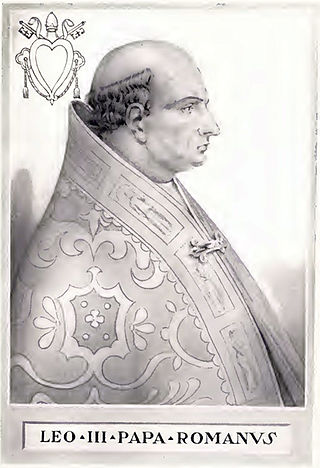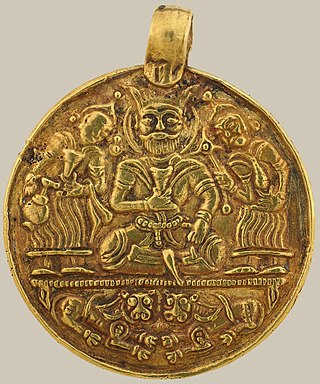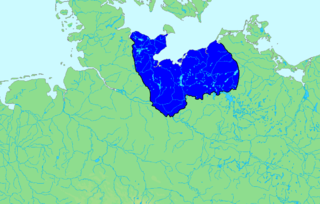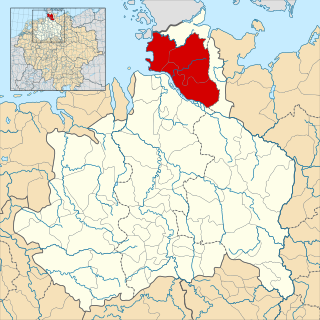
Year 795 (DCCXCV) was a common year starting on Thursday of the Julian calendar. The denomination 795 for this year has been used since the early medieval period, when the Anno Domini calendar era became the prevalent method in Europe for naming years.

Year 983 (CMLXXXIII) was a common year starting on Monday of the Julian calendar.

The Obotrites or Obodrites, also spelled Abodrites, were a confederation of medieval West Slavic tribes within the territory of modern Mecklenburg and Holstein in northern Germany. For decades, they were allies of Charlemagne in his wars against the Germanic Saxons and the Slavic Veleti. The Obotrites under Prince Thrasco defeated the Saxons in the Battle of Bornhöved (798). The still-Pagan Saxons were dispersed by the emperor, and the part of their former land in Holstein north of Elbe was awarded to the Obotrites in 804, as a reward for their victory. This however was soon reverted through an invasion of the Danes. The Obotrite regnal style was abolished in 1167, when Pribislav was restored to power by Duke Henry the Lion, as Prince of Mecklenburg, thereby founding the Germanized House of Mecklenburg.
Gottschalk, sometimes rendered as Godescalc, was a prince of the Obotrite confederacy from 1043 to 1066. He established a Polabian Slavic kingdom on the Elbe in the mid-11th century. His object in life seems to have been to collect the scattered tribes of the Slavs into one kingdom, and to make that kingdom Christian.

Polabian Slavs, also known as Elbe Slavs and more broadly as Wends, is a collective term applied to a number of Lechitic tribes who lived scattered along the Elbe river in what is today eastern Germany. The approximate territory stretched from the Baltic Sea in the north, the Saale and the Limes Saxoniae in the west, the Ore Mountains and the Western Sudetes in the south, and medieval Poland in the east.

The Saxon Wars were the campaigns and insurrections of the thirty-three years from 772, when Charlemagne first entered Saxony with the intent to conquer, to 804, when the last rebellion of tribesmen was defeated. In all, 18 campaigns were fought, primarily in what is now northern Germany. They resulted in the incorporation of Saxony into the Frankish realm and their forcible conversion from Germanic paganism to Christianity.

The Limes Saxoniae, also known as the Limes Saxonicus or Sachsenwall, was an unfortified limes or border between the Saxons and the Slavic Obotrites, established about 810 in present-day Schleswig-Holstein.
Thrasco (*Daržĭkŭ) was the Prince (knyaz) of the Obotrite confederation from 795 until his death in 810. He succeeded his father, Witzlaus II, who had been ambushed and killed by the revolting Saxons. Thrasco defeated the Saxons in the battle on Schwentine River in 798. He was murdered in Reric in 810. Thrasco had a son, Cedragus, the Obotrite prince from 819 to 826.

Nordalbingia was one of the four administrative regions of the medieval Duchy of Saxony, the others being Angria, Eastphalia, and Westphalia. The region's name is based on the Latin name Alba for the Elbe River and refers to an area predominantly located north of the Lower Elbe, roughly corresponding with the present-day Holstein region. Situated in what is now Northern Germany, this is the earliest known dominion of the Saxons.

The Billung March or March of the Billungs was a frontier region of the far northeastern Duchy of Saxony in the 10th century. It was named after the family which held it, the House of Billung.
Henry was an Obotrite prince or king (1093–1127) from the Nakonid dynasty; he was regarded by contemporaries as "King of the Slavs". The Obotrite realm reached its greatest area during Henry's rule, extending from the Elbe to the Oder and from the Havelland to the Baltic Sea.

Niklot or Nyklot was a chief or prince of the Slavic Obotrites and an ancestor of the House of Mecklenburg. He became chief of the Obotrite confederacy, including the Kissini and the Circipani, between the years 1130 and 1131. He remained in this position until his death in 1160. At the same time he was Lord of Schwerin, Quetzin and Malchow. For nearly 30 years he resisted Saxon princes, especially Henry the Lion during the Wendish Crusade.
The Nakonids were the leading noble family of the Slavic peoples of the Elbe River from ca. 960 until 1129. They were themselves of Obotrite origin and engineered the formation of a Slavic principality in the region. They became extinct in the male line in the early 12th century. Their capital was Mecklenburg Castle.
Pribislav was an Obotrite prince and the first Prince of Mecklenburg (1167–1178).

Mecklenburg Castle was a medieval castle and a residential capital of the Nakonid and Nikloting dynasties of the Obotrites. It was located just south of the modern village Dorf Mecklenburg, seven kilometres south of the Bay of Wismar in Mecklenburg-Vorpommern, Germany. The only remnants of the ruined castle are parts of an earthen wall. Some scholars have associated Mecklenburg with the medieval trading emporium Reric.

In the Slavic revolt of 983, Polabian Slavs, Wends, Lutici and Obotrite tribes, that lived east of the Elbe River in modern north-east Germany overthrew an assumed Ottonian rule over the Slavic lands and rejected Christianization under Emperor Otto I.
Stoigniew was an Obotrite leader, who reigned during the middle of the tenth century. He is mentioned as a member of the princely Nakonid dynasty in the medieval chronicles of Thietmar of Merseburg and Widukind of Corvey.
The Smeldingi were a small group of Polabian Slavs living on the border of the Old Saxony in the 9th century, probably between the Elbe and the Havel. They were a sub-group of the Hevelli. Their name is derived from the Proto-Slavic word *smola ('resin') and is related to the ethnonym of the South Slavic Smolyani and the name of the East Slavic city of Smolensk.
The Linones were a small Slavic people first recorded in the early 9th century. They lived north and east of the Elbe, across from Höhbeck in the region around Lenzen, south of the Wilzi and Obotrites, north of the Hevelli and northeast of the Saxons. They may have been a sub-group of the Wilzi and were often under Obotrite control. They may be associated with the medieval Gau Liezizi.